Maximize Hydration with ElectroPrime
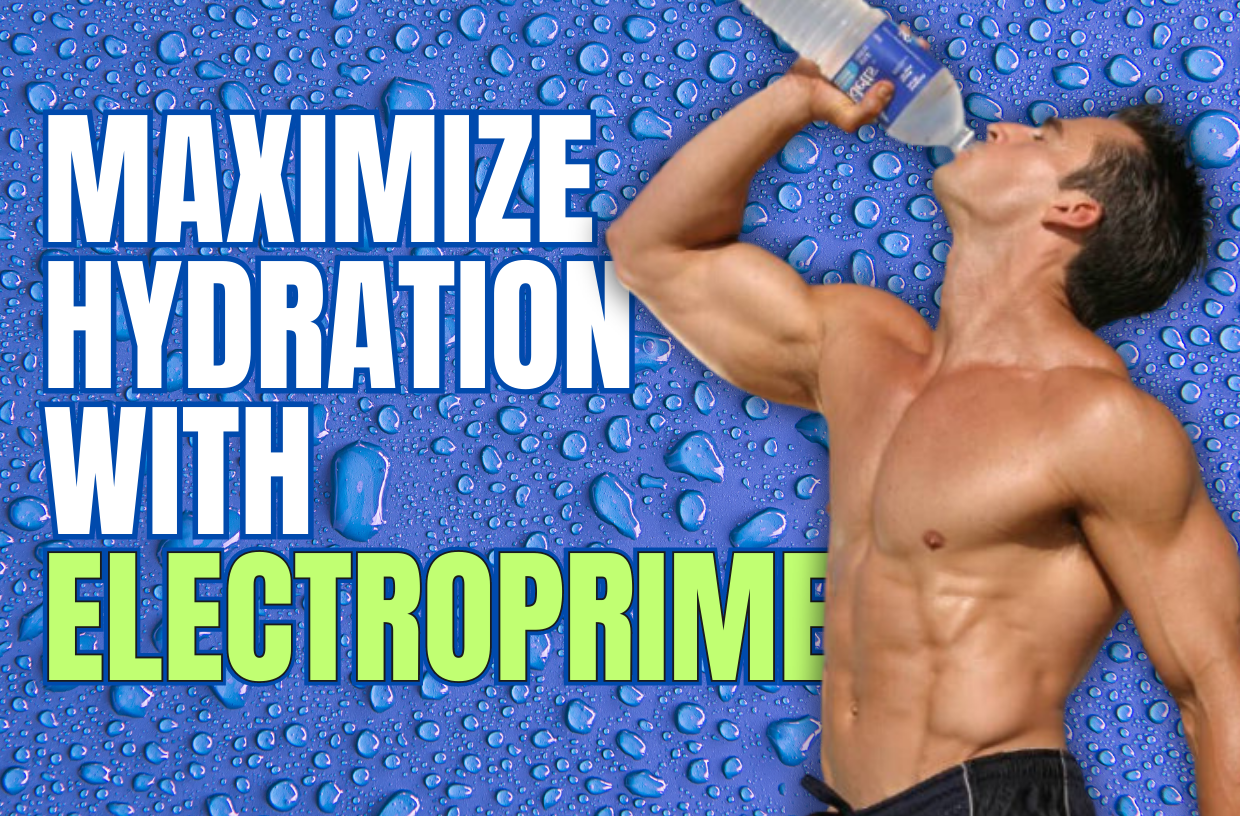
Hydration is one factor that can alter physical performance. Losing as little as 2 percent of the body’s water via sweat loss can increase heart rate, core temperature, and muscle glycogen use.1 It can also decrease cardiac output, cognitive awareness, power output and time to exhaustion.1 Additionally, inadequate replacement of sodium, the predominant electrolyte lost through sweat, is thought to worsen the decline of these factors.
Therefore, using fluid and electrolyte replacement drinks and/or powders added to water has been shown to be effective for maintaining hydration and optimizing performance. Moreover, research suggests that the addition of glycerol can hydrate even better than water and electrolytes alone.
ElectroPrime is a novel combination of NNB Nutrition’s premium HydroPrime, a glycerol powder combined with premium electrolytes. This powerful combination is designed to aid in maximizing hydration, optimizing electrolyte balance, and increasing endurance performance. In this review, we’re going over the research behind glycerol and electrolytes, and how ElectroPrime can help maximize hydration potential.
What Is Glycerol?
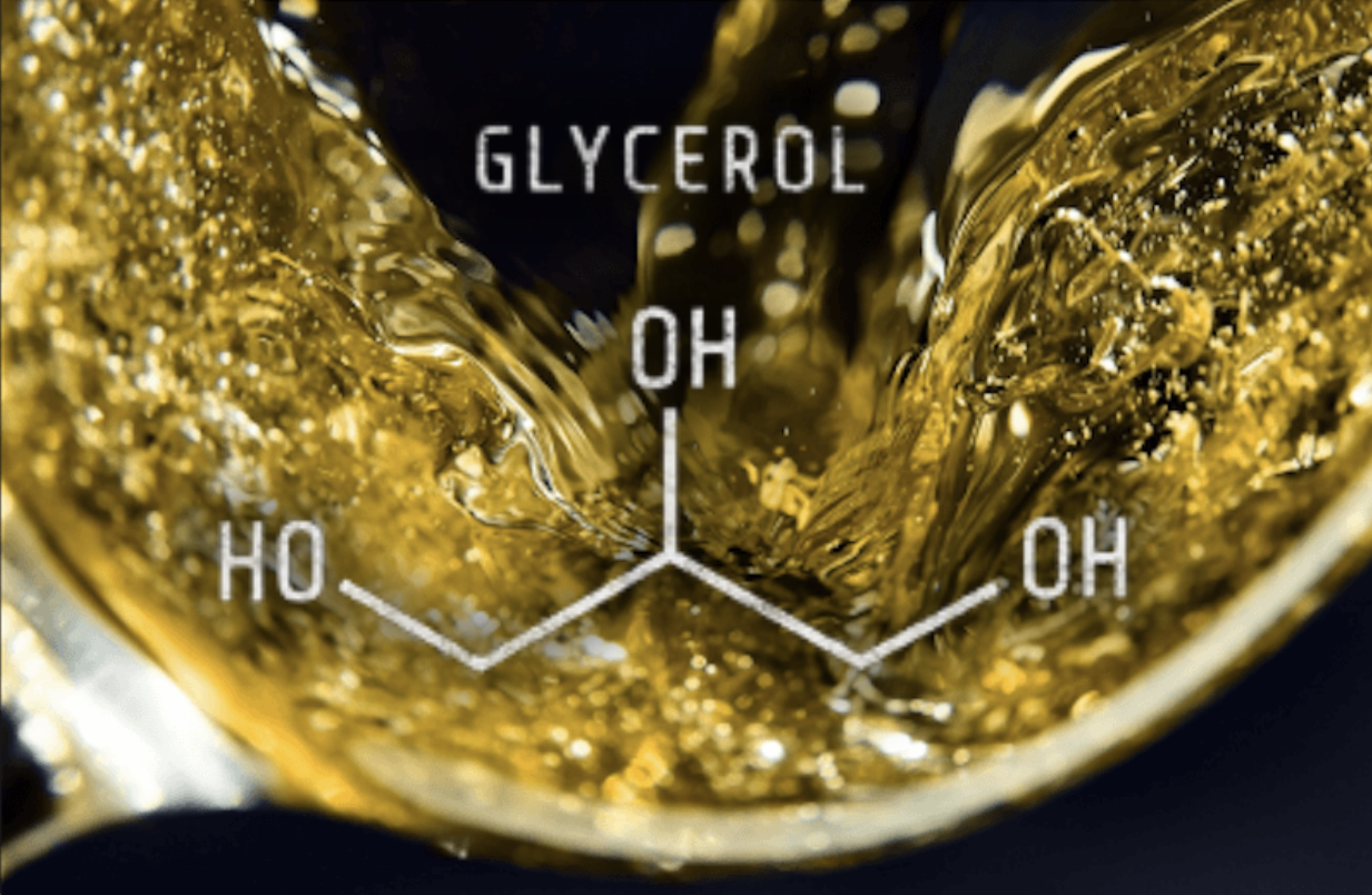 Glycerol, which occurs naturally in the body, is made up of glucose, proteins, pyruvate, and triacylglycerols and can form the backbone of stored fats.2 Lipids are generally stored as triglycerides, and the first step in lipid metabolism is the conversion to glycerol and fatty acids. The fatty acids can then enter the Krebs cycle and undergo oxidative phosphorylation to generate ATP—energy that can be used as a main source of energy in muscle. Ketones can be produced as a by-product of lipid metabolism and can be used an alternative energy source to glucose when levels are low, such as during periods of fasting. The remaining glycerol can enter the liver, where it’s used for lipid synthesis.
Glycerol, which occurs naturally in the body, is made up of glucose, proteins, pyruvate, and triacylglycerols and can form the backbone of stored fats.2 Lipids are generally stored as triglycerides, and the first step in lipid metabolism is the conversion to glycerol and fatty acids. The fatty acids can then enter the Krebs cycle and undergo oxidative phosphorylation to generate ATP—energy that can be used as a main source of energy in muscle. Ketones can be produced as a by-product of lipid metabolism and can be used an alternative energy source to glucose when levels are low, such as during periods of fasting. The remaining glycerol can enter the liver, where it’s used for lipid synthesis.
Glycerol’s Water Absorbing Properties
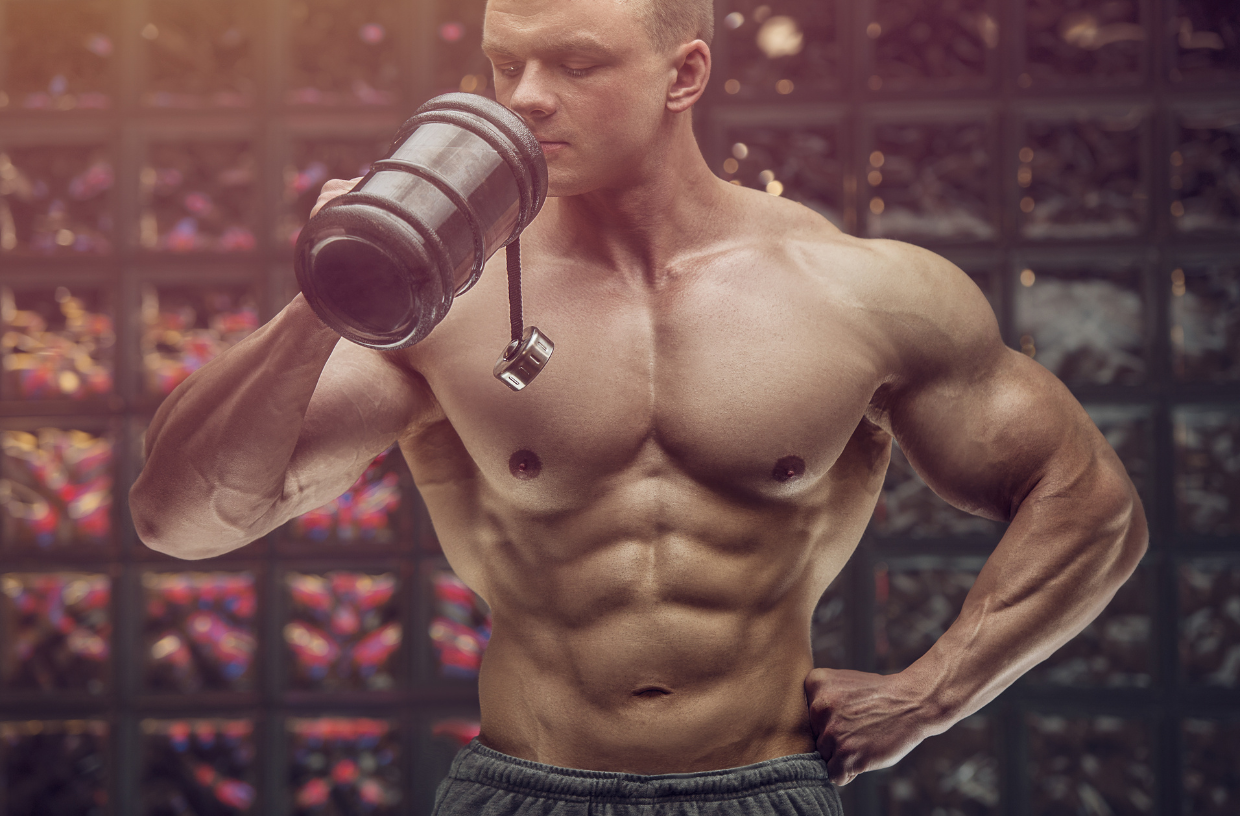 Glycerol is a hygroscopic sugar alcohol molecule, which means it attracts and absorbs water from its environment. Glycerol’s water-absorbing properties make it an attractive supplement for driving cellular volume and hydration. When consumed, glycerol is absorbed rapidly in the body, dispersing itself evenly between body fluid compartments before it’s slowly metabolized via the liver and kidneys.2 Glycerol can increase osmotic pressure and the total volume of water in the body, which enhances the retention of fluid with which glycerol is ingested. When combined with large volumes of water, glycerol has been shown to increase total body water more than water hyperhydration alone. In addition, pre-workout glycerol supplementation has been shown to have positive effects on performance.
Glycerol is a hygroscopic sugar alcohol molecule, which means it attracts and absorbs water from its environment. Glycerol’s water-absorbing properties make it an attractive supplement for driving cellular volume and hydration. When consumed, glycerol is absorbed rapidly in the body, dispersing itself evenly between body fluid compartments before it’s slowly metabolized via the liver and kidneys.2 Glycerol can increase osmotic pressure and the total volume of water in the body, which enhances the retention of fluid with which glycerol is ingested. When combined with large volumes of water, glycerol has been shown to increase total body water more than water hyperhydration alone. In addition, pre-workout glycerol supplementation has been shown to have positive effects on performance.
Glycerol for Endurance
 The effects of glycerol supplementation on hydration and workout performance were examined in well-conditioned subjects.3 The randomized double-blind, crossover design study evaluated pre-workout glycerol supplementation compared to a water placebo in a cycle ergometer load exercise test. Participants given 1.2 g/kg of glycerol dissolved in a 26 mL/kg solution before exercise experienced a prolonged endurance time—up to 24 percent, lasting around 94 minutes—compared to just 44 minutes for those who received the water placebo.3 In addition, mean heart rate was also lowered by 4.4 beats per minute with glycerol ingestion.3
The effects of glycerol supplementation on hydration and workout performance were examined in well-conditioned subjects.3 The randomized double-blind, crossover design study evaluated pre-workout glycerol supplementation compared to a water placebo in a cycle ergometer load exercise test. Participants given 1.2 g/kg of glycerol dissolved in a 26 mL/kg solution before exercise experienced a prolonged endurance time—up to 24 percent, lasting around 94 minutes—compared to just 44 minutes for those who received the water placebo.3 In addition, mean heart rate was also lowered by 4.4 beats per minute with glycerol ingestion.3
Glycerol for Cell Volume & Pumps
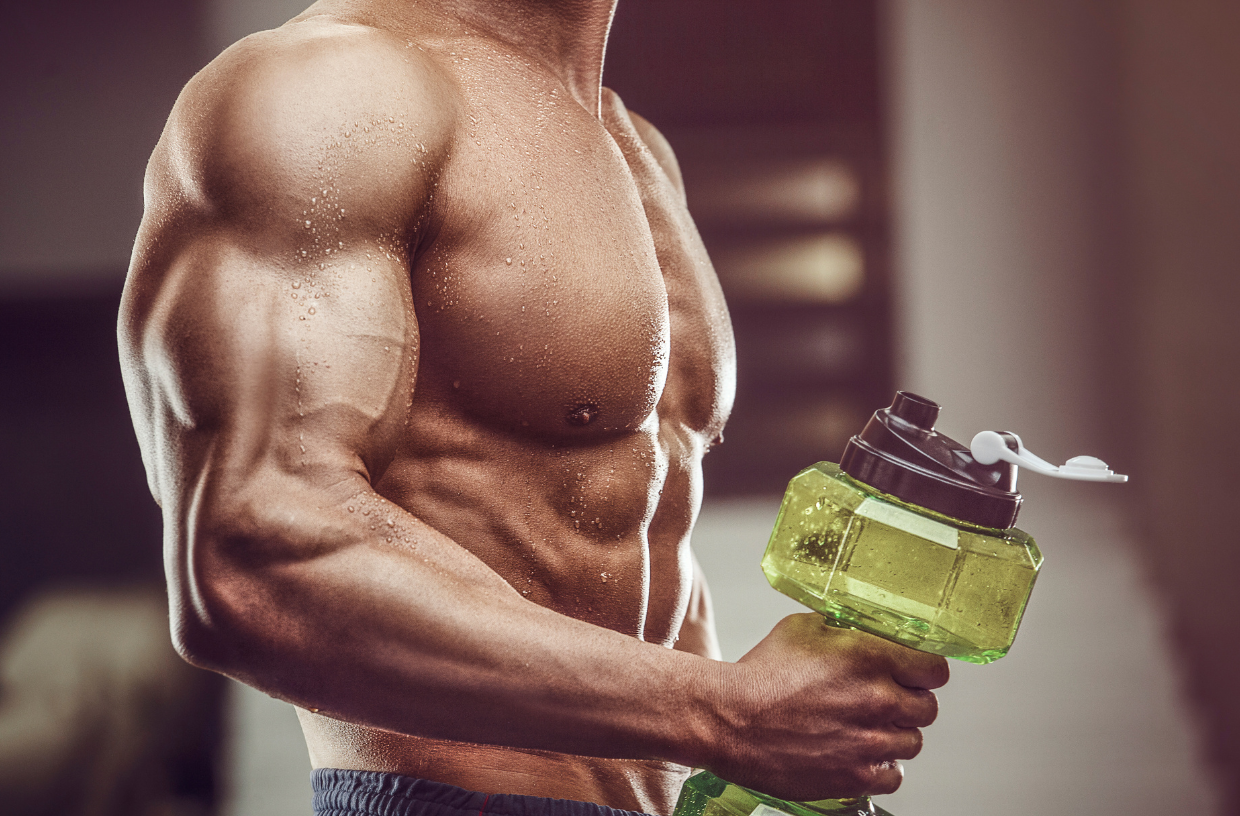 Glycerol’s ability to maintain water retention makes it great not only for prolonging endurance performance but also for increasing muscle volume and pumps. When the body—more specifically, the muscles—has plenty of water, it can maintain cellular volume, particularly during exercise. Some studies have shown that glycerol supplementation at one gram per kilogram of body weight in a total volume of 20 to 26 milliliters per kilogram of body weight can significantly decrease urine volume and increase fluid retention by between 300 and 1000 mL.4,5,6 In another study, the average fluid retention in the body was almost 500 milliliters, and there was an increase in forearm blood flow of nearly 40 percent higher toward the end of the exercise period, showing greater distribution of blood volume circulation.7 This additional water volume allows for greater muscle pumps, but also provides an alternative non-nitric oxide pathway for increasing cell volume.
Glycerol’s ability to maintain water retention makes it great not only for prolonging endurance performance but also for increasing muscle volume and pumps. When the body—more specifically, the muscles—has plenty of water, it can maintain cellular volume, particularly during exercise. Some studies have shown that glycerol supplementation at one gram per kilogram of body weight in a total volume of 20 to 26 milliliters per kilogram of body weight can significantly decrease urine volume and increase fluid retention by between 300 and 1000 mL.4,5,6 In another study, the average fluid retention in the body was almost 500 milliliters, and there was an increase in forearm blood flow of nearly 40 percent higher toward the end of the exercise period, showing greater distribution of blood volume circulation.7 This additional water volume allows for greater muscle pumps, but also provides an alternative non-nitric oxide pathway for increasing cell volume.
Glycerol for Low-Carb & Keto Diets
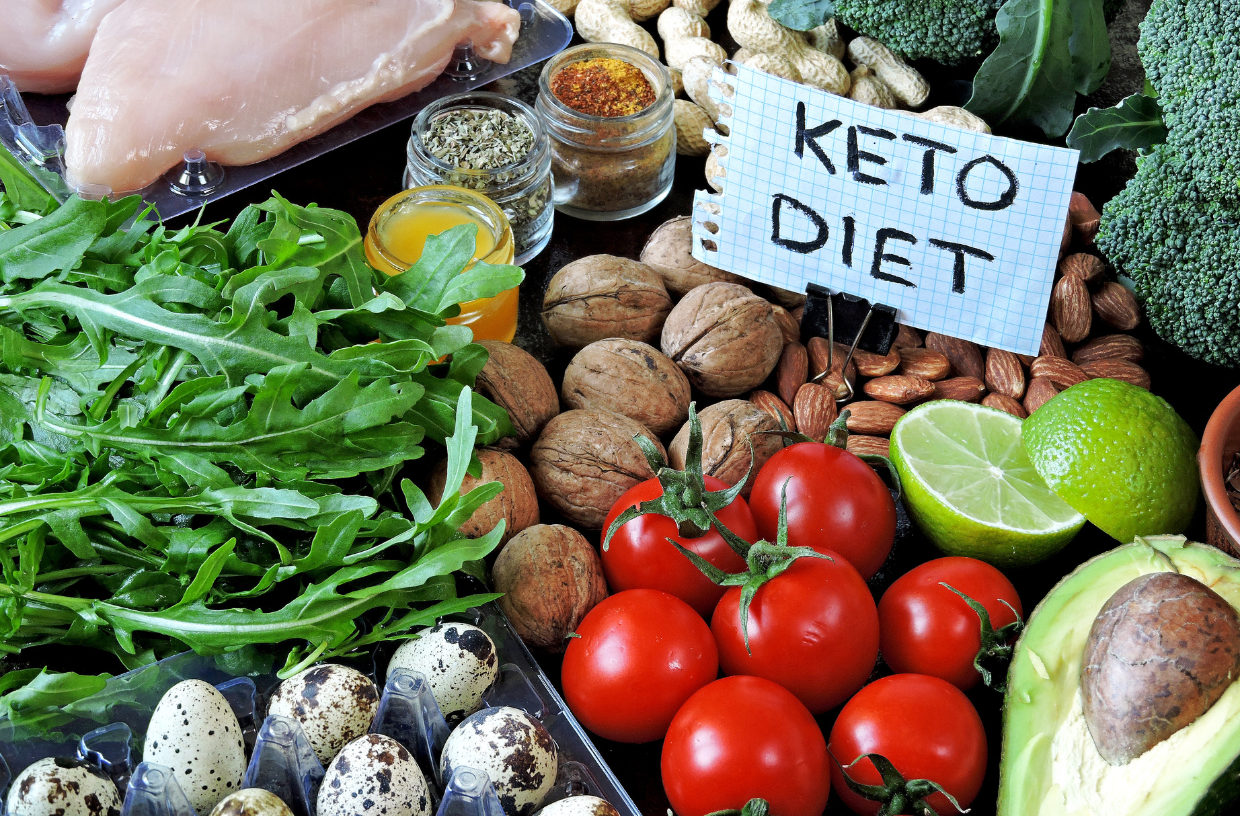 Because glycerol is a sugar alcohol, it’s not metabolized as sugar in the body and won’t cause a rise in blood glucose. Sugar alcohols are used as sugar replacements because of their sweet taste and non-impact carbohydrate content. Non-impact carbs are the carbs that have minimal effect on blood sugar levels after they’ve been ingested. In one study, the effects of glycerol loading of one gram per kilogram of body weight was determined in eight normal subjects.8 Blood glucose levels weren’t affected by glycerol loading, and plasma free fatty acids were significantly lowered after 90 minutes of a glycerol load.8 Although blood glucose levels didn’t change, insulin levels did. Insulin is an anabolic shuttling hormone that moves nutrients around to where they’re needed most—such as to the muscle.
Because glycerol is a sugar alcohol, it’s not metabolized as sugar in the body and won’t cause a rise in blood glucose. Sugar alcohols are used as sugar replacements because of their sweet taste and non-impact carbohydrate content. Non-impact carbs are the carbs that have minimal effect on blood sugar levels after they’ve been ingested. In one study, the effects of glycerol loading of one gram per kilogram of body weight was determined in eight normal subjects.8 Blood glucose levels weren’t affected by glycerol loading, and plasma free fatty acids were significantly lowered after 90 minutes of a glycerol load.8 Although blood glucose levels didn’t change, insulin levels did. Insulin is an anabolic shuttling hormone that moves nutrients around to where they’re needed most—such as to the muscle.
Glycerol & Salt for Hydration
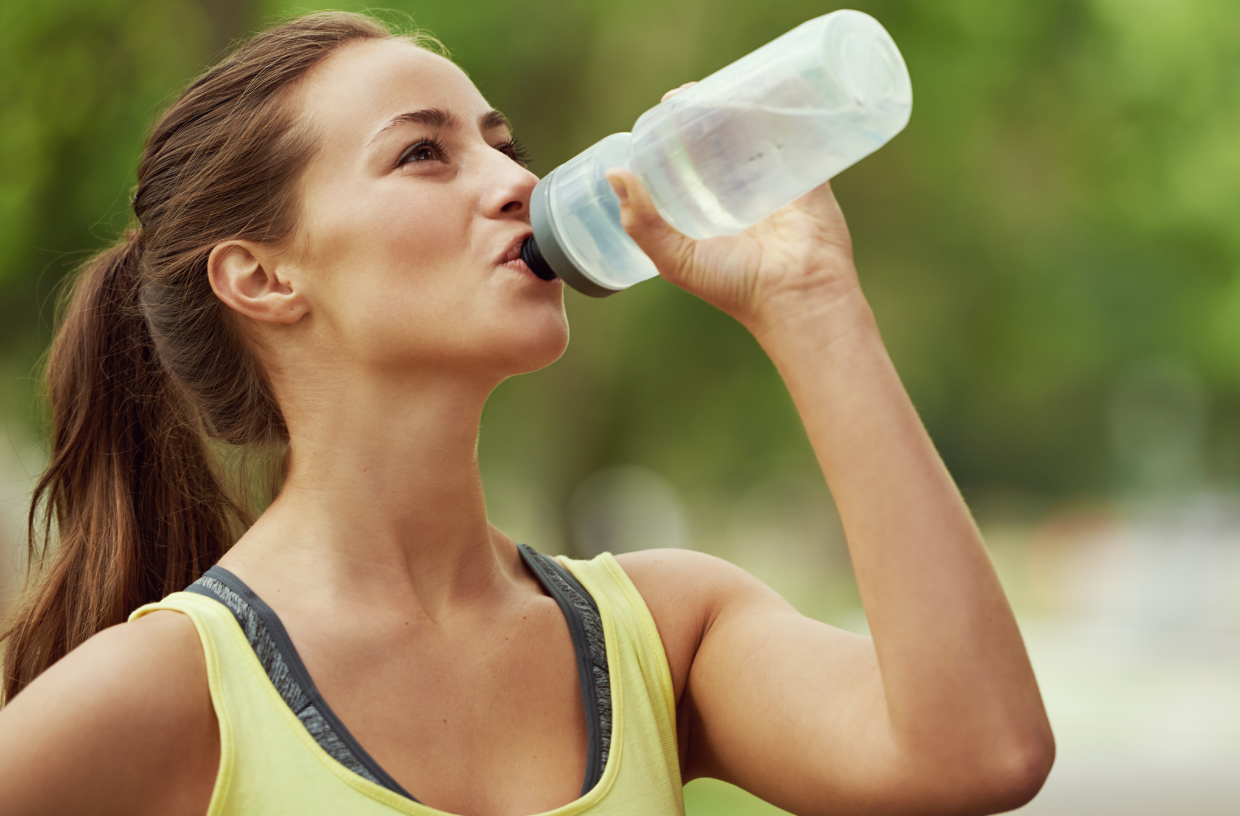 Numerous studies have confirmed that the use of electrolytes can help maintain hydration during exercise. Electrolytes, including sodium chloride or salt, can optimize fluid retention in the body. Sodium and glycerol produce their hydrating effects through different physiological mechanisms. It has been shown that the combination of glycerol and salt into a hyperhydration solution can have a greater impact on fluid retention than if used singularly.
Numerous studies have confirmed that the use of electrolytes can help maintain hydration during exercise. Electrolytes, including sodium chloride or salt, can optimize fluid retention in the body. Sodium and glycerol produce their hydrating effects through different physiological mechanisms. It has been shown that the combination of glycerol and salt into a hyperhydration solution can have a greater impact on fluid retention than if used singularly.
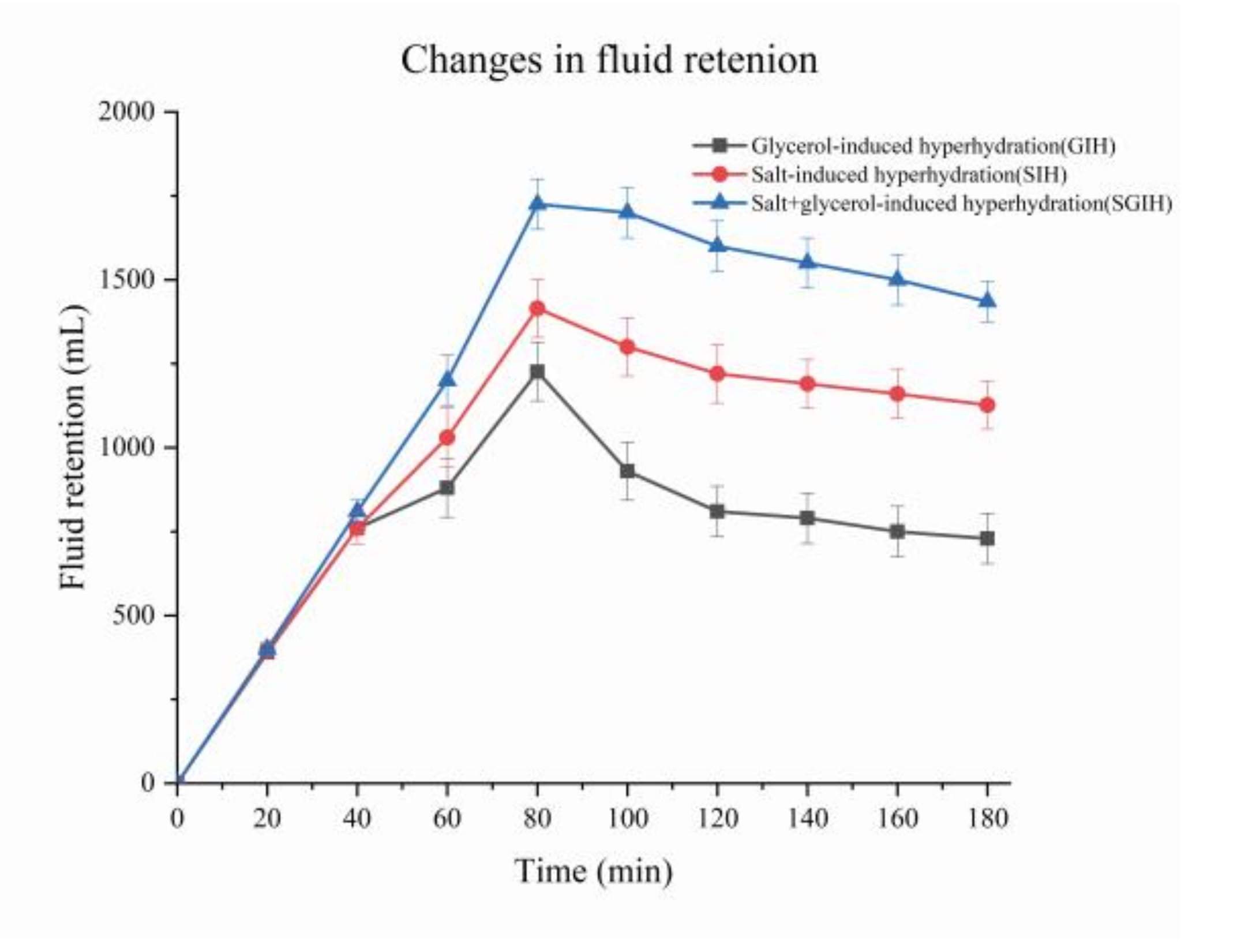 A randomized, crossover, and counterbalanced study compared the effect of salt-induced hyperhydration, glycerol-induced hyperhydration, and salt plus glycerol-induced hyperhydration on fluid balance responses during a three-hour passive hyperhydration experiment.9 After three hours, the total urine production was significantly lower and fluid retention was higher in the salt plus glycerol-induced hyperhydration group than in either the glycerol or salt groups. The salt plus glycerol-induced hyperhydration group had reduced urine production by 28.9 percent and increased fluid retention by 27.3 percent versus the salt-induced hyperhydration.9
A randomized, crossover, and counterbalanced study compared the effect of salt-induced hyperhydration, glycerol-induced hyperhydration, and salt plus glycerol-induced hyperhydration on fluid balance responses during a three-hour passive hyperhydration experiment.9 After three hours, the total urine production was significantly lower and fluid retention was higher in the salt plus glycerol-induced hyperhydration group than in either the glycerol or salt groups. The salt plus glycerol-induced hyperhydration group had reduced urine production by 28.9 percent and increased fluid retention by 27.3 percent versus the salt-induced hyperhydration.9
What Are the Electrolytes?
 Electrolytes can help aid in fluid balance in the body, maintaining hydration or aiding in rehydration. The main electrolytes needed in the body are sodium (Na+), potassium (K+), and chloride (Cl). The minerals calcium (Ca2+) and magnesium (Mg2+) can also aid cellular function. ElectroPrime provides a precise ratio of the electrolytes to support fluid balance and blood pressure control.
Electrolytes can help aid in fluid balance in the body, maintaining hydration or aiding in rehydration. The main electrolytes needed in the body are sodium (Na+), potassium (K+), and chloride (Cl). The minerals calcium (Ca2+) and magnesium (Mg2+) can also aid cellular function. ElectroPrime provides a precise ratio of the electrolytes to support fluid balance and blood pressure control.
Sodium
Sodium—or salt—is the main regulator of the extracellular fluid volume, maintaining the homeostatic balance of sodium and water amid environmental, performance, and dietary factors. Sodium is important in the regulation of osmolarity, acid-base balance, and the membrane potential of cells.10 Sodium is also involved in active transport across cell membranes and must be pumped out in exchange for potassium to maintain an appropriate intracellular environment—a process that requires energy. The body can become depleted of sodium for a variety of reasons, including because of excess sweat loss from exercise or hot climates.
Potassium
Potassium is the main intracellular cation, a positively charged ion. It’s also found at low concentrations in the extracellular space, where it contributes to transmission of nerve impulses, has a role in the control of skeletal muscle contractility, and helps maintain blood pressure.10

Chloride
Chloride is the principal inorganic anion, a negatively charged ion, in the extracellular fluid that is essential in maintaining fluid and electrolyte balance.10 Dietary chloride comes almost entirely from sodium chloride. Much smaller amounts are supplied from potassium chloride.
Calcium
Calcium helps facilitate the signal to stimulate muscle contraction.11 If adequate calcium isn’t available in the muscle, full contractions during weight training cannot be maintained. Additionally, calcium is needed to help build and maintain bones, which in turn helps support increased lean muscle.
Magnesium
Magnesium goes together with calcium. It allows chemical messengers to stimulate the muscle cells so that calcium can enter and muscle contraction can occur.12 Magnesium is involved in ATP production, or muscle energy, by assisting in the conversion of glucose in food into smaller molecules that can be used inside the mitochondria to produce more energy.12 By supplementing with magnesium, you can help ensure that you have the energy you need to exercise at higher intensities for longer periods.
Formulators Corner
 The hydration market continues to grow, with a majority of products currently out there providing basic electrolyte formulations. NNB’s ElectroPrime delivers a unique, ready-to-use blend of glycerol plus electrolytes for maximum hydration benefits in an easy-to-formulate premix. Simply flavor, and this product is ready to go!
The hydration market continues to grow, with a majority of products currently out there providing basic electrolyte formulations. NNB’s ElectroPrime delivers a unique, ready-to-use blend of glycerol plus electrolytes for maximum hydration benefits in an easy-to-formulate premix. Simply flavor, and this product is ready to go!
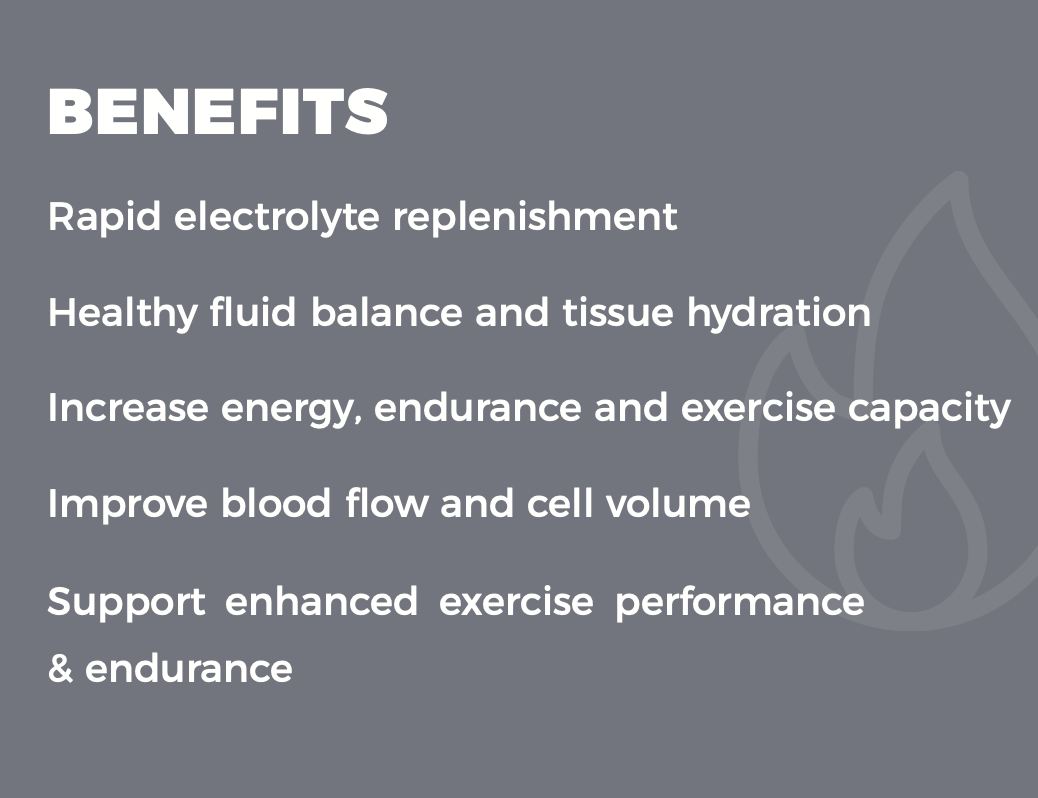 ElectroPrime’s cell-volumizing and endurance benefits also make it a great pre- or intra-workout product that can be added to other ingredients, including BCAAs and EAAs. The content of glycerol in ElectroPrime also makes it a good addition to low-carb and keto powders such as keto coffee creamer, because glycerol doesn’t spike blood glucose levels like glucose but is still 75 percent as sweet!13 Plus, the added electrolytes are beneficial for hydration.
ElectroPrime’s cell-volumizing and endurance benefits also make it a great pre- or intra-workout product that can be added to other ingredients, including BCAAs and EAAs. The content of glycerol in ElectroPrime also makes it a good addition to low-carb and keto powders such as keto coffee creamer, because glycerol doesn’t spike blood glucose levels like glucose but is still 75 percent as sweet!13 Plus, the added electrolytes are beneficial for hydration.
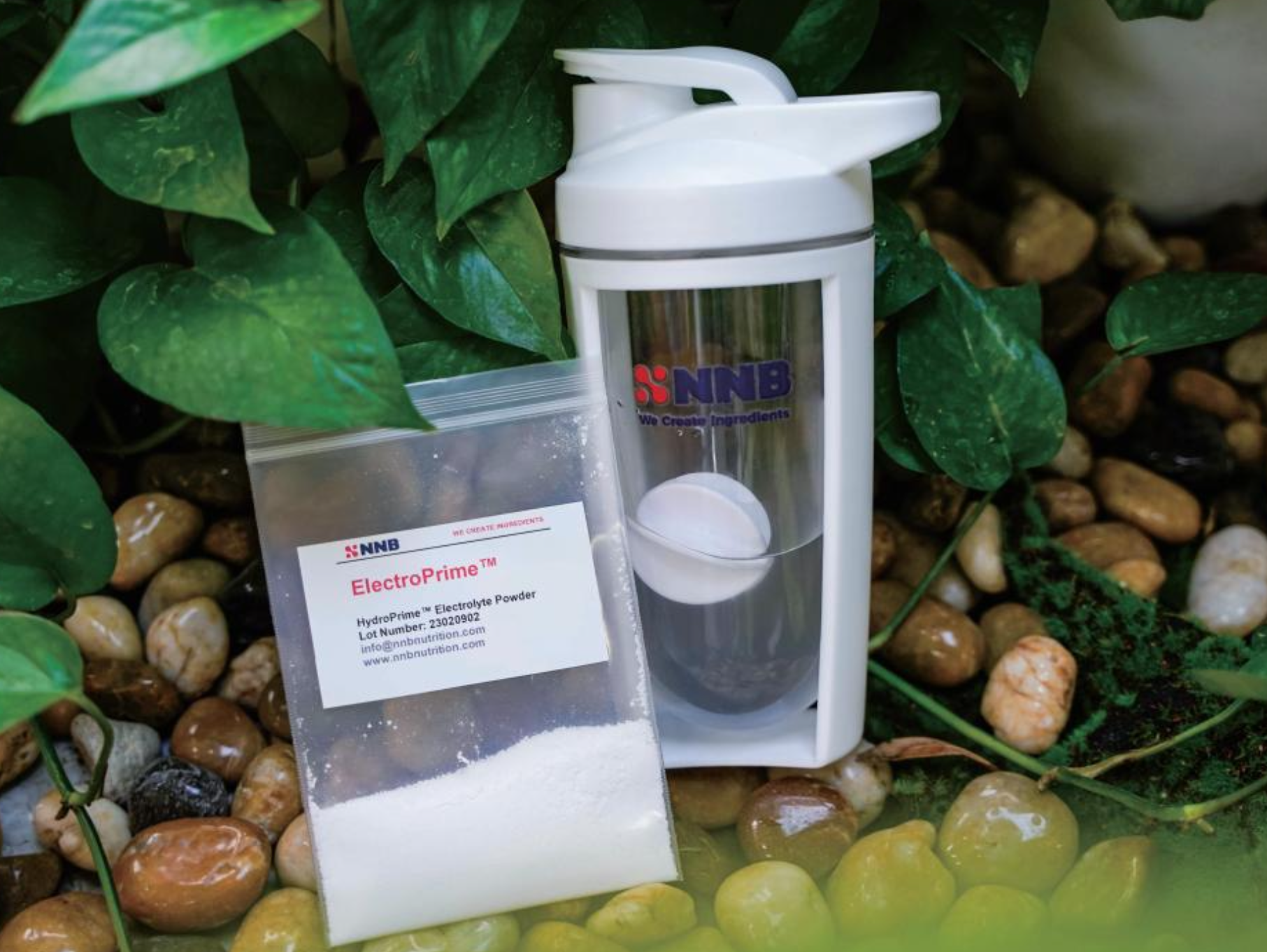 ElectroPrime combines HydroPrime glycerol powder and electrolytes using OsmoPrime technology to ensure a precise scientific ratio and formulation to maximize hydration speed. This instantized formula has maximum solubility and is manufactured under cGMP standards for maximum purity, potency, and consistency.
ElectroPrime combines HydroPrime glycerol powder and electrolytes using OsmoPrime technology to ensure a precise scientific ratio and formulation to maximize hydration speed. This instantized formula has maximum solubility and is manufactured under cGMP standards for maximum purity, potency, and consistency.
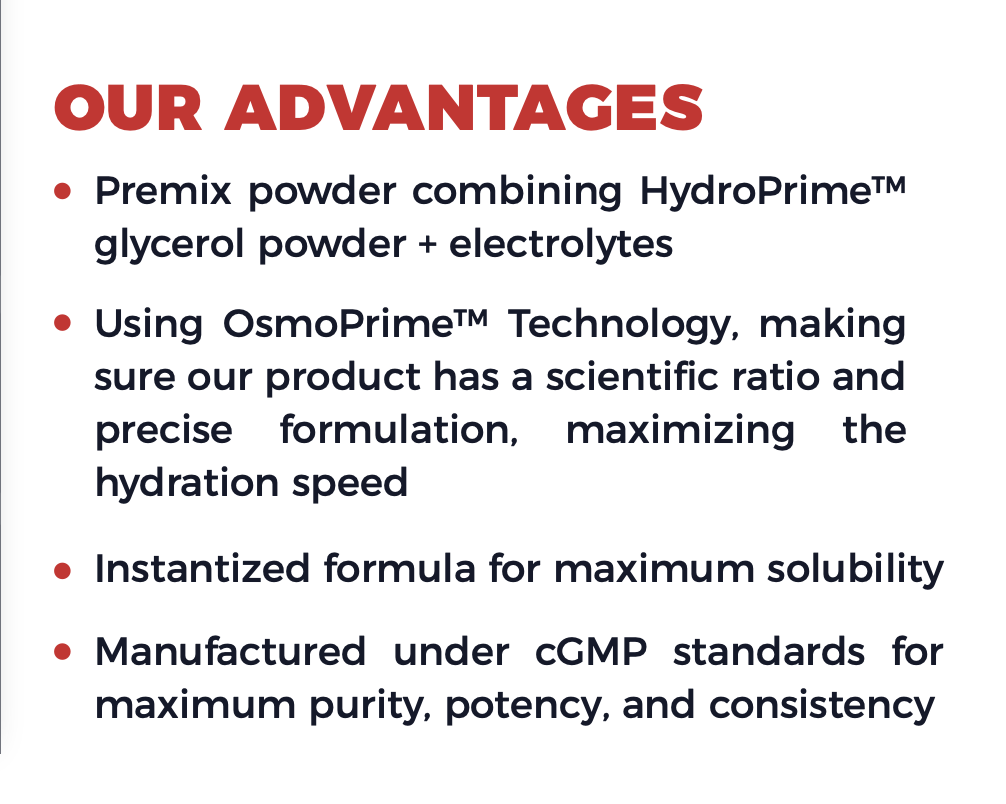
 Interested in more information regarding NNB Nutrition and its other unique ingredients? Visit nnbnutrition.com.
Interested in more information regarding NNB Nutrition and its other unique ingredients? Visit nnbnutrition.com.
References:
- Ayotte D, et al. Individualized hydration plans improve performance outcomes for collegiate athletes engaging in in-season training. J ISSN. 2018. 15: 27.
- Patlar S, et al. The effect of glycerol supplements on aerobic and anaerobic performance of athletes and sedentary subjects. J Hum Kinet. 2012. 34: 69-79.
- Montner P, et al. Pre-exercise glycerol hydration improves cycling endurance time. Int J Sports Med. 1996. 17(1): 27-33.
- Riedesel ML, et al. Hyperhydration with glycerol solutions. J Appl Physiol. 1987. 63: 2262-2268.
- Lyons TP, et al. Effects of glycerol induced hyperhydration prior to exercise in the heat on sweating and core temperature. Med Sci Sports Exerc. 1990. 22:477-483.
- Freund BJ, et al. Glycerol hyperhydration: hormonal, renal, and vascular fluid responses. J Appl Physiol. 1995. 79:2069-2077.
- Mc Cullagh J, et al. Physiological and performance effects of glycerol hyperhydration for world championship distance duathlons in hot conditions. Int J Sport Health Sciences. 2013. 7(7): 351-55.
- Zanoboni A, et al. Stimulation of insulin secretion in man by oral glycerol administration. Metabolism. 1976. 25(1): 41-5.
- Goulet EDB, et al. Sat + glycerol-induced hyperhydration enhances fluid retention more than salt- or glycerol- induced hyperhydration. Int J Sports Nutr. 2018. 28(3): 246-52.
- Recommended Dietary Allowances: 10th Edition. Chapter 11: Water & Electrolytes. National Research Council (US) Subcommittee on the Tenth Edition of RDAs. National Academies Press US. 1989.
- MacIntosh BR. Role of calcium sensitivity modulation in skeletal muscle performance. News Physiol Sci. 2003. 18: 222-5.
- Carvil PJ, et al. Magnesium and Implications on Muscle Function. Strength Condition J. 2010. 32(1): 48-54.
- Freeman J, et al. Low Carbohydrate Food Facts and Fallacies. Diabetes Sepctr. 2004. 17(3): 137-40.
*© Copyright Notice: Muscle Insider can’t always determine which images are protected by copyrights. We use images that are part of the public record and believed to be under the public domain. If for some reason somebody believes copyrights are violated we will remove or replace the content in question after receiving a DMCA notice.

